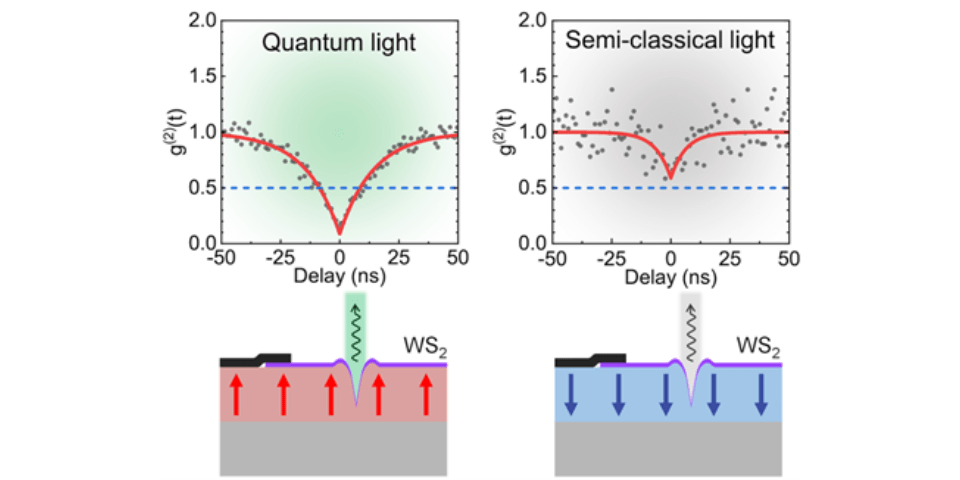WASHINGTON – A U.S. Naval Research Laboratory (NRL) multi-disciplinary team developed a new paradigm for the control of quantum emitters, providing a new method for modulating and encoding quantum photonic information on a single photon light stream.
Quantum photonics is expected to offer functionality not possible with classical light and promises significant advances in secure communications, metrology, sensing, and quantum information processing and computation.
These applications impose many requirements on quantum emitter (QE) candidates, including deterministic creation and placement of the emitter, a high degree of single photon purity ranging from 90-100%, and a mechanism to control or modulate such emission. The ability to modulate the character of the light emitted from these discrete emitters offers a mechanism for encoding information on a single photon stream, with applications in secure communications and quantum encryption schemes based upon single photon sources. This work was recently published in ACS Nano 18, 25349-25358 (2024).


